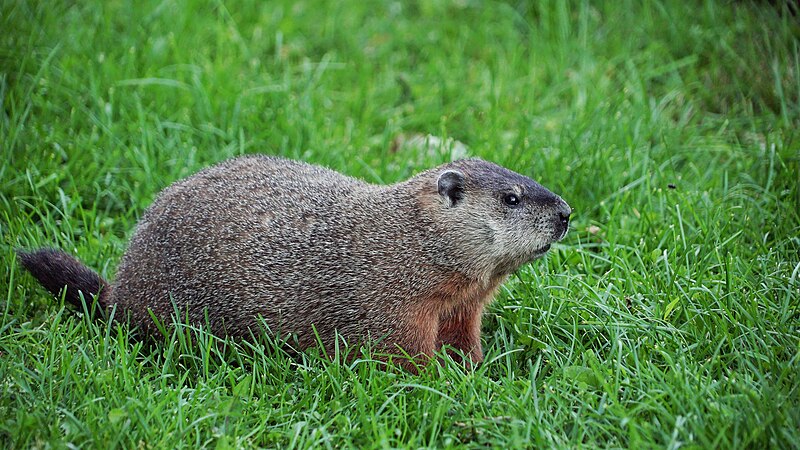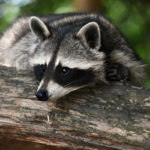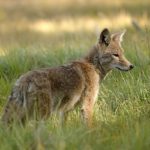While groundhogs are the stars of the show in the garden, several other animals share their charmingly chubby appearance and burrowing habits.
Key Takeaways
- Quick identification guide for animals that look like groundhogs
- Understanding the behavior and habits of groundhog look-alikes
- Tips for distinguishing between groundhogs and similar animals
Imagine you’re enjoying a sunny afternoon in your garden when you spot a furry creature darting across the lawn. Its plump body and quick movements make you think it’s a groundhog, but something seems a bit off. Could it be one of the many look-alikes that share the groundhog’s charmingly chubby appearance and burrowing habits? Groundhogs, also known as woodchucks, are well-known residents of many backyards and gardens, but they’re not the only ones who love to dig and munch on your plants.
At AAAC Wildlife Removal, we know that identifying the critters in your yard can be a bit of a head-scratcher. That’s why we’re here to help you dive into the fascinating world of groundhog doppelgängers. By the end of this journey, you’ll be a pro at distinguishing groundhogs from their many furry cousins, making your outdoor observations all the more enjoyable and informed. So, let’s get started and discover which animals might be sharing your garden with these charming burrowers.
The Groundhog’s Doppelgängers
Groundhogs, with their stout bodies and penchant for burrowing, have a few look-alikes in the animal kingdom. These critters not only resemble groundhogs in appearance but also share some of their habits, making it easy to mistake one for the other. Whether you’re an avid gardener or simply a curious observer, it’s useful to know who these groundhog doppelgängers are. In this section, we’ll introduce you to the key players in the groundhog look-alike game and explore the visual and behavioral similarities that often lead to mistaken identity.
Groundhogs are part of the squirrel family, which might come as a surprise given their size and burrowing lifestyle. But within this family, several species bear a striking resemblance to our garden-loving friends. From prairie dogs to marmots, these animals share more with groundhogs than just good looks—they also have similar lifestyles and ecological roles. Let’s meet these fascinating creatures and see what makes them so easy to confuse with groundhogs.
Prairie Dogs
First on our list of groundhog look-alikes are prairie dogs. These sociable rodents are often mistaken for groundhogs due to their similar size and burrowing habits. Prairie dogs are slightly smaller than groundhogs, but they share a similar body shape and coloring, which can make a quick glance misleading.
Physically, prairie dogs have a more slender build and shorter tails compared to groundhogs. Their fur is usually a lighter brown, blending in perfectly with the dry, grassy plains they call home. Behaviorally, prairie dogs are highly social animals, living in large colonies known as “towns.” These towns are complex networks of burrows that provide shelter and social structure for the community.
Unlike groundhogs, which are relatively solitary, prairie dogs are known for their intricate social behaviors. They communicate through a series of chirps and barks, warning each other of potential dangers. While groundhogs will retreat to their burrows when threatened, prairie dogs rely on the safety of numbers and their lookout system to stay safe.
Understanding these differences can help you quickly distinguish between a groundhog and a prairie dog. While their burrows and general appearance might be similar, the social behavior and habitat of prairie dogs set them apart from their more solitary groundhog cousins.
Marmots
Marmots are another group of animals that often get mistaken for groundhogs, and for good reason. These large ground squirrels share many physical traits with groundhogs, including their robust bodies, short legs, and bushy tails.
Marmots, however, come in a variety of species, each with slight differences in appearance and habitat. For instance, the yellow-bellied marmot, commonly found in mountainous regions, has a distinctive yellowish-brown fur that sets it apart from the more uniformly brown groundhog. Marmots are also typically larger than groundhogs, with some species weighing up to twice as much.
Their behavior is quite similar, as both are adept burrowers and spend a significant portion of their lives underground. However, marmots are more likely to be found in higher altitudes, living in rocky terrains, whereas groundhogs prefer lowland areas with plenty of vegetation. Understanding these nuances can help you tell a marmot from a groundhog at a glance.
Beavers
Beavers might not be the first animal that comes to mind when thinking about groundhog look-alikes, but they do share a few similarities that can cause confusion. Both beavers and groundhogs have stout bodies and a love for burrowing, but that’s where their similarities largely end.
Beavers are aquatic rodents known for their impressive dam-building skills. Their flat, paddle-like tails are a dead giveaway, distinguishing them from the bushy-tailed groundhog. Additionally, beavers have webbed feet and a more streamlined body suited for swimming. While groundhogs dig complex burrow systems on land, beavers create lodges and dams in rivers and streams.
These constructions not only provide shelter but also create ponds that benefit other wildlife. If you see an animal near water with a sleek, water-adapted body and a flat tail, you’re definitely looking at a beaver and not a groundhog. Recognizing these habitat and physical differences can prevent any mix-ups when you’re observing wildlife in your backyard or nearby natural areas.
Gophers
Gophers are another burrowing mammal that often gets confused with groundhogs. While both animals are known for their digging habits, gophers are generally smaller and have different physical characteristics. Gophers, particularly pocket gophers, have a more cylindrical body shape and are usually about half the size of an average groundhog.
They also possess large, visible incisors that they use for gnawing through roots and tubers. One of the most distinctive features of gophers is their fur-lined cheek pouches, which they use to carry food. These pouches give gophers their characteristic puffed cheeks. Unlike groundhogs, which dig extensive burrow systems with multiple entrances, gophers create smaller, less complex tunnel networks. Their mounds are also more noticeable on the surface, often appearing as crescent-shaped dirt piles. Understanding these physical and behavioral distinctions can help you accurately identify a gopher in your garden or yard.
Voles
Voles are small rodents that are sometimes mistaken for young groundhogs due to their similar size and burrowing behavior. However, voles are much smaller, usually only about 5 to 8 inches long, and have shorter, more rounded bodies. Their fur is typically gray or brown, blending in with their grassy or forest floor habitats. Voles are prolific breeders and can quickly establish large populations if conditions are favorable. Unlike groundhogs, which are solitary and create extensive burrow systems, voles build simpler runways and burrows just below the surface.
These shallow tunnels can cause noticeable damage to lawns and gardens. Voles primarily feed on plants, including grasses, seeds, and roots, making them a common pest for gardeners. Recognizing voles involves looking for their smaller size, distinctive surface runways, and the specific types of damage they cause to vegetation. By understanding these key differences, you can easily differentiate between a vole and a groundhog.
Distinguishing Features
When it comes to telling groundhogs apart from their look-alikes, there are several key distinguishing features to consider. Size is often the first clue; groundhogs tend to be larger than many of their doppelgängers, such as gophers and voles.
Additionally, groundhogs have a more robust and stocky build, whereas animals like prairie dogs and voles have a more slender appearance. Another distinguishing feature is the tail. Groundhogs have bushy, short tails, while beavers have flat, paddle-like tails, and gophers have relatively hairless, shorter tails. Habitat is another critical factor; groundhogs prefer grassy fields and woodland edges, while marmots often reside in rocky, mountainous areas, and beavers are found near water bodies.
Behavioral cues can also help; groundhogs are relatively solitary, while prairie dogs live in large colonies, and gophers are known for their constant digging and distinctive mounds. By focusing on these markers—size, tail type, habitat, and social behavior—you can confidently identify whether you’re looking at a groundhog or one of its many look-alikes.
Why It Matters
Correctly identifying the animals in your garden or yard is more than just a fun wildlife-watching activity; it has practical implications for managing your outdoor space. Knowing whether you’re dealing with a groundhog, gopher, or vole can influence how you approach garden maintenance and pest control.
Groundhogs, for example, can cause significant damage to crops and garden plants with their voracious appetites and extensive burrowing. Gophers and voles, while smaller, can still wreak havoc on root systems and create unsightly surface runways and mounds. Understanding the specific habits and preferences of each animal allows for more targeted and effective management strategies.
Additionally, recognizing these animals and their behaviors can enhance your appreciation of the local wildlife, fostering a deeper connection to your natural surroundings. So next time you spot a furry creature in your yard, you’ll not only know what you’re looking at but also how to coexist with or manage these fascinating critters effectively.
Conclusion
Spotting a furry critter darting across your garden can be both exciting and perplexing. Is it a groundhog, or one of its many look-alikes? By now, you’ve become well-versed in the world of groundhog doppelgängers—from the sociable prairie dogs to the industrious beavers, the compact gophers, and the small but mighty voles. Each of these animals shares some similarities with groundhogs but also has unique characteristics that set them apart.
Recognizing these differences not only satisfies your curiosity but also has practical benefits. Proper identification can help you manage your garden and yard more effectively, ensuring that you’re prepared to deal with each animal’s specific habits and potential impacts. At AAAC Wildlife Removal, we’re here to help you understand and appreciate the wildlife in your backyard, offering tips and solutions for coexisting with or managing these fascinating creatures.
So, next time you catch a glimpse of a burrowing animal, you’ll know exactly what to look for. Enjoy the process of observing and identifying these wonderful critters, and take pride in your newfound expertise. Happy wildlife watching!














